9 Global Wellness Day Ideas for the Workplace (In-Person and Remote)
Last Updated Jul 3, 2025

Wellness can’t wait: Nearly half of employees say work-related stress is hurting their mental health. Global Wellness Day is your chance to flip the script.
This isn’t about recycled fitness challenges or bland fruit baskets. It’s about designing moments that actually move the needle on connection, motivation, and long-term wellbeing. Think: tech-free lunches that teach mindfulness. Movement sessions that meet employees where they are. Wellness gifts that stick.
You’ll find real examples, practical steps, and ideas built for every kind of workforce, from fully remote to frontline.
Elevate your strategy with wellness programming that’s as dynamic and human as your people.
What You'll Learn
- Wellness Initiatives Must Be Inclusive, Intentional, and Holistic: From mindful eating and movement to meditation and volunteering, the most effective wellness programs support employees' physical, emotional, mental, and even financial health — across all roles, locations, and lifestyles.
- Real-World Activities Drive Participation and Impact: Practical, customizable programs like group fitness classes, meditation workshops, and wellness fairs promote lasting engagement. When paired with inclusive planning and follow-up support, they reinforce wellbeing as a core workplace value.
- Small Touches Can Have Big Meaning: Thoughtful gifts, tech-free moments, and shared meals send a strong cultural signal: employee wellbeing matters. These gestures help reinforce long-term habits while making wellness feel personal and accessible.
- Connection Is the Cornerstone of Workplace Wellness: Peer-led initiatives like volunteering, team fitness challenges, and book clubs foster belonging. When employees feel connected — to each other and their purpose — wellbeing naturally improves.
- Wellbeing is Multi-Dimensional — and So Are the Solutions: Effective programs integrate physical health, mindfulness, financial literacy, and intellectual growth. Organizations that recognize this complexity can build cultures that truly support the whole employee.
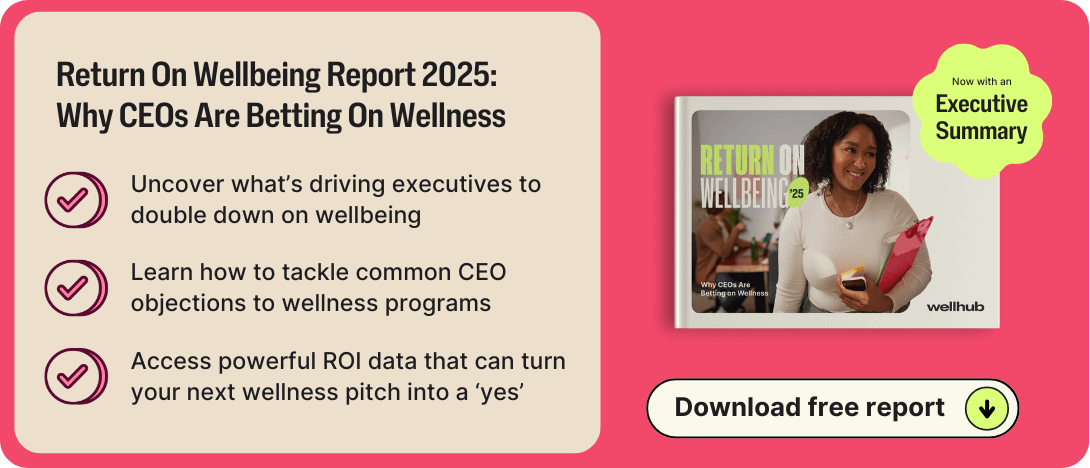
- Facilitate Mindful Eating
Mindful eating is the practice of intentionally paying attention to food: how it smells, how it tastes, and how it makes you feel. It's a research-backed way to help people feel better, think clearly, and be more present throughout the workday.
Many employees are missing out on these great benefits. Wellhub research shows that only 40% of employees say they have good nutrition, and more than a third of employees say time constraints are to blame for their poor diet.
Creating mindful eating moments can be a powerful part of your employee wellness strategy. Here's how to build them into your workplace.
Step 1: Provide Mindful Eating Education
Host a virtual or onsite lunch-and-learn with a registered dietitian. This can help employees understand how to build a balanced plate, reduce stress eating, and make food choices that fuel sustained energy.
💡Pro tip: Make it interactive. Invite employees to prepare a meal during the session — whether at home or in a shared space — and walk them through each ingredient and decision.
Step 2: Plan a Mindful Eating Meal Experience
Instead of yet another working lunch, create space for slow eating. Organize a “silent lunch” or “tech-free lunch” hour. Provide prompts to guide the experience step in real-time. This tactile experience can turn theory into habit.
Make it hybrid-friendly by livestreaming the event and recording it for on-demand access. For remote employees, consider mailing ingredient kits or providing a stipend to purchase their own.

Step 3: Create a Culture of Intentional Eating
Rushed meals diminish digestion and lower work quality. Encourage leaders to model taking real lunch breaks. This signals to teams that it’s okay to step away from their screens.
You could also create “mindful eating zones” in the office — quiet, tech-free spaces for eating without distractions. Add visual cues like table tents or posters to promote intentional habits, such as:
- “Take a deep breath before your first bite.”
- “Pause halfway through — how does your body feel?”
Step 4: Plan a Group Mindfulness Meal Event
Mindfulness doesn’t have to be solo. It can also be about savoring shared experiences. Host a “Mindful Munch” potluck where employees bring nutritious dishes and share the story behind them: why they chose it, how they made it, or what memory it sparks.
For remote teams: Offer a gift card to a healthy restaurant or meal delivery service so they can participate too. Then invite everyone to a shared virtual meal where folks can reflect on how their food tastes, smells, and feels together.
Step 5: Build a Sustained Culture of Mindfulness with Robust Wellness Program
According to the Wellhub State of Work-Life Wellness 2025 report, the more often someone practices mindfulness, the more likely they are to report doing well — mentally and physically.
Pair your mindful eating initiative with other wellbeing programs that support presence and intention, like:
- Guided lunchtime meditations
- Daily Slack prompts for “screen-free bites”
- Access to mindful eating workshops through Wellhub partners
- Host a Fitness Competition
A workplace fitness challenge is a high-energy way to celebrate Global Wellness Day. It’s a golden opportunity to build team connections while moving more.
That’s especially important now: Just over half of employees (54%) say they are in good shape. And for the 56% who say time constraints are their top blocker to fitness, a workplace challenge can help them prioritize movement during the day.
Whether your workforce is in the office, remote, or hybrid, you can tailor a challenge that gets everyone’s heart pumping — and maybe even a little friendly competition going.
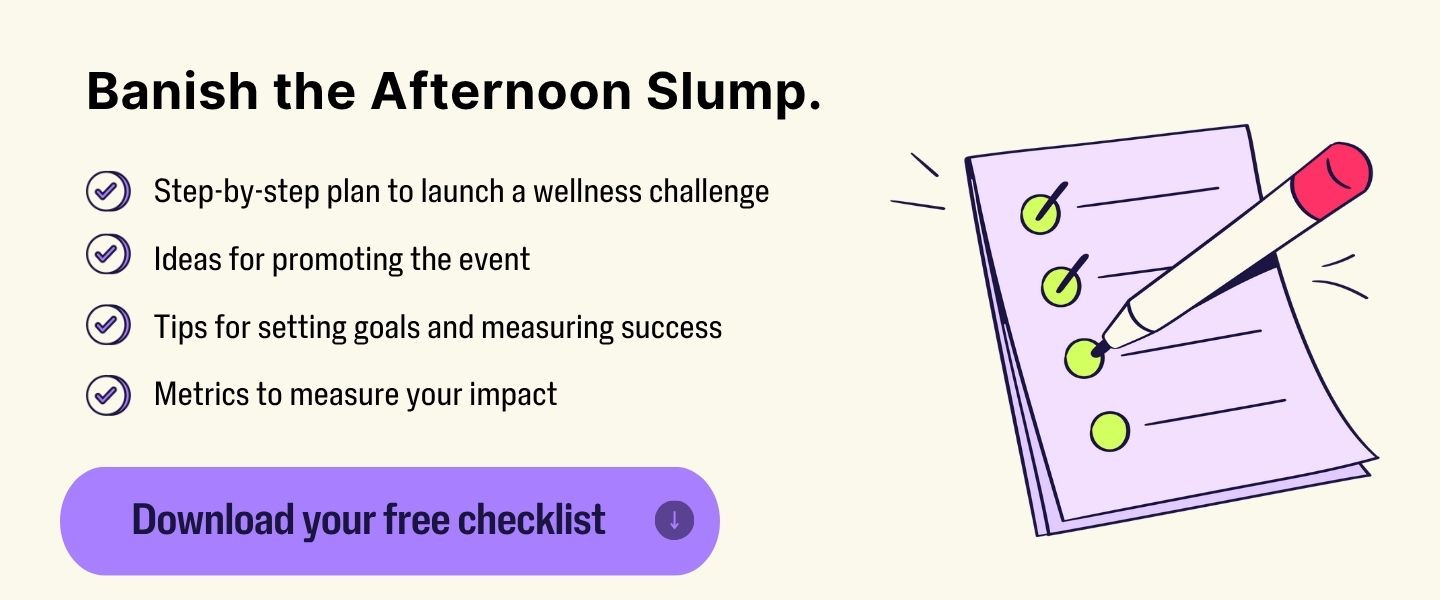
Step 1: Choose a Format that Fits Your Workforce
There’s no one-size-fits-all when it comes to fitness fun. Here are three formats to choose from:
- In-person tournament: Host a bracket-style competition with classic sports like basketball, volleyball, or kickball.
- Office Olympics: Design a field day with events like three-legged races, hula-hooping, jump rope, and yes — hopscotch.
- Virtual fitness challenge: Encourage remote employees to track activity like steps, yoga sessions, or active minutes with wearables or a tracking app.
💡Pro tip: Let employees vote on which format excites them most. Giving people a say can increase buy-in and boost participation.
Step 2: Set Clear Goals and Rules
Every challenge needs a scoreboard. Choose your metrics based on your specific challenge:
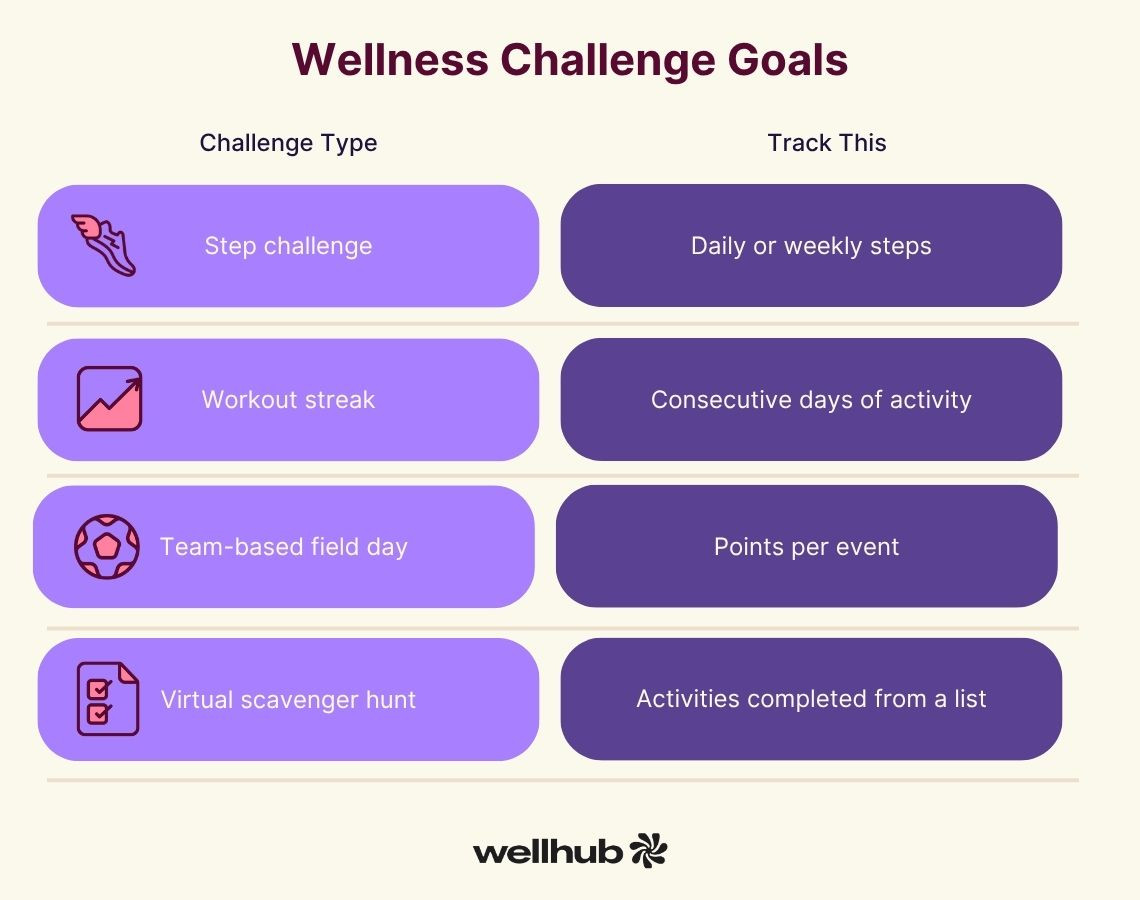
Establish start and end dates, explain how scores will be tracked, and make sure all employees — regardless of fitness level — feel like they can participate meaningfully.
Step 3: Incentivize Participation
Yes, wellness is its own reward. But let’s be real: prizes are a great motivator.
Offer prizes that reinforce wellbeing, such as:
- Gift cards to healthy restaurants or smoothie spots
- Free fitness classes or subscriptions
- Nutrition coaching sessions
- A team trophy for department-wide wins
For remote winners, send prizes right to their door — think fruit baskets, yoga mats, or meal kits.
Step 4: Make it Inclusive and Accessible
Every body is different, and every employee should be able to join in. Here’s how to make that happen:
- Offer a range of low-impact and high-impact activities
- Let people self-report if they’re not using a tracker
- Form teams that mix departments, job levels, and locations to encourage bonding
Remember, the ultimate goal is to celebrate moving together.
Step 5: Celebrate Everyone
Wrap things up with a celebration — virtual or in person. Highlight top scorers, most improved, and team MVPs. More importantly, recognize the collective energy your organization brought to the challenge.
Want to make it even more impactful? Collect feedback from participants and use it to plan your next initiative. Fitness challenges work best when they become traditions — not one-offs.
- Provide Group Fitness Activities
Not every wellness event needs a leaderboard. Sometimes, the most impactful moments are the simplest, like moving together without keeping score. Offering group fitness activities for your team can be a refreshing, low-pressure way to celebrate Global Wellness Day and promote daily movement.
And right now, your employees need that support. Only39% of employees describe themselves as fit, suggesting that plenty of employees still see room to grow. Facilitating movement in a way that feels inviting — not intimidating — can help bridge that gap.
Here’s how to make it work for every employee, no matter their role, schedule, or fitness level.
Step 1: Offer Accessible, All-Level Classes
One of the most effective ways to get people moving is to remove the guesswork. That’s what makes hosted fitness classes such a strong option. Whether you bring a yoga teacher into the office or rent out a local cycling or Pilates studio, pre-scheduled group sessions give employees a clear time and place to engage.
Be sure to:
- Choose formats that require no prior experience, like yoga, tai chi, or stretch-and-strengthen sessions
- Communicate details early so employees can adjust their schedules
- Include class modifications so participants can tailor the workout to their comfort level
Streaming the session over Zoom can open it up to remote employees — and if you advertise it early, nearby remote employees may choose to attend in person.
Step 2: Encourage Participation Without Pressure
Make it clear that these sessions are about showing up, not showing off. Promote a “come as you are” mindset by encouraging employees to dress comfortably and take breaks as needed.
To accommodate different preferences, offer multiple class times or formats. For example:
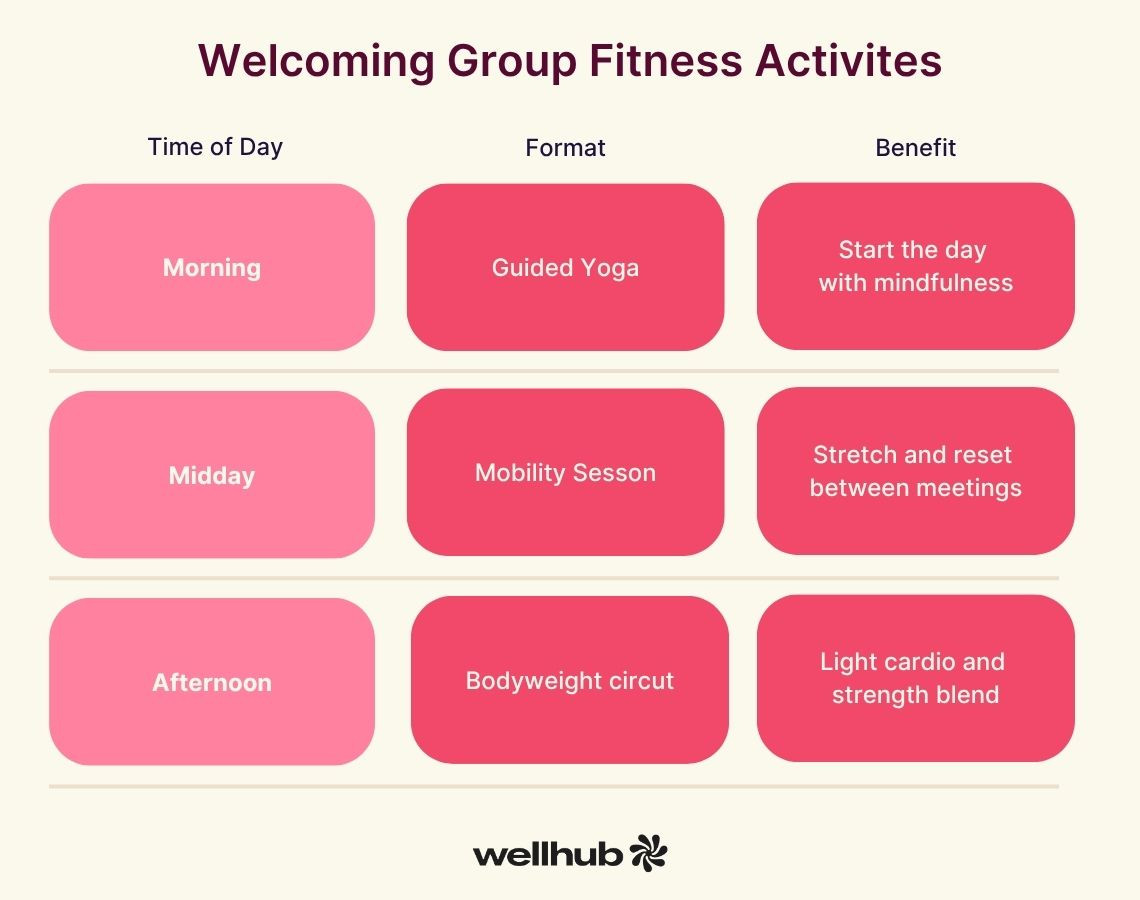
This helps employees engage on their own terms, building momentum for broader wellness initiatives.
Step 3: Make Space for Gentle Movement
Not everyone wants to sweat at work. Group walks and hikes offer a lower-intensity alternative that still gets people away from their desks and into fresh air. These activities support connection and can have a real mental reset effect — especially when they’re built into the workday.
Here’s how to make it seamless:
- Send a calendar invite for a 30-minute walk, and make it company-wide
- Choose a nearby, accessible route for in-person employees
- Encourage remote employees to block the same time to walk in their neighborhoods
Adding a mindfulness component — such as walking in silence for the first five minutes — can enhance the restorative effect of this break.
Step 4: Keep the Momentum Going
If employees enjoy these activities, use that energy to inform future programming. Track attendance and gather informal feedback to find out:
- Which time slots worked best
- What types of movement employees liked most
- How they felt afterward — physically and mentally
You can even rotate different types of activities seasonally or by quarter, using Global Wellness Day as a kickoff point.
- Offer Meditation Workshops
Meditation isn’t just about quieting the mind — it’s a practical tool for helping employees meet the day with more clarity, patience, and self-awareness. The benefits are wide-ranging: meditation can reduce stress, improve sleep, lower resting heart rate, and help people stay even during challenging moments.
This is critical when nearly half of employees say stress from work is damaging their emotional wellness. (That makes it the top driver of poor mental health across the workforce.) Offering space for stillness can be a powerful counterbalance to the constant motion of modern work.
Here’s how to structure a corporate meditation program that meets your people where they are.
Step 1: Schedule Short, Guided Sessions Into the Day
You don’t need to block off an hour to make an impact. Even 10 or 15 minutes of meditation can create space for focus and calm.
Make it easy for employees to join by:
- Offering brief sessions during natural break points — like mid-morning or post-lunch
- Hiring a certified meditation coach to lead live sessions in a quiet office space
- Live streaming every session for remote employees and archiving recordings for future use
Consistency matters more than intensity. A short, daily moment of mindfulness can help build a habit that supports long-term wellbeing.
Step 2: Introduce Multiple Styles of Meditation
Just like exercise, meditation isn’t one-size-fits-all. Some people respond to breath-focused practices. Others prefer guided visualizations or body scans. A rotating series of workshops can help your team explore different styles and find what works best for them.
Consider offering short seminars on:
- Mindfulness meditation: Staying grounded in the present moment
- Guided meditation: Following a calming narrative or visualization
- Loving-kindness meditation: Practicing compassion toward self and others
- Movement-based meditation: Gentle stretching, tai chi, or walking meditations
Each style offers different benefits. Introducing variety can help employees stick with a practice that aligns with their needs and comfort level.
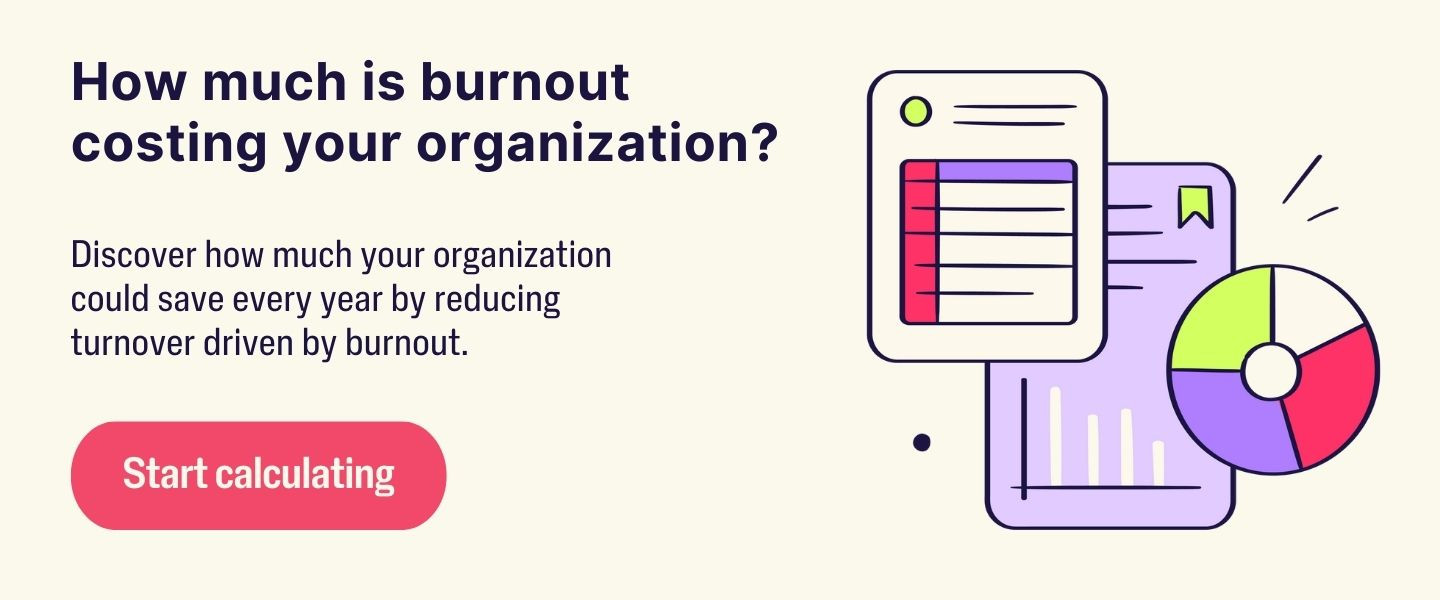
Step 3: Normalize the Practice at Work
One of the most powerful things you can do is give employees permission to slow down. Here’s how to make meditation part of your culture — not just a one-time event:
- Encourage leaders to attend and model participation
- Create a recurring calendar invite for optional drop-in sessions
- Designate a quiet space in the office that’s always available for meditation or mindfulness breaks
When employees see that meditation is encouraged and accessible, they’re more likely to take advantage of it — and feel supported in doing so.
Step 4: Gather Insights and Grow the Program
As with any wellness initiative, feedback is key. After the initial workshops, ask employees:
- Did the session feel useful or calming?
- Would they be interested in a regular practice?
- What times or formats work best for their schedule?
- Host a Wellness Fair
Eighty-five percent of workers believe their employer has a responsibility to help them tend to their wellbeing. A wellness fair gives you the opportunity to meet that expectation by providing a dedicated chance to explore new tools, hear from experts, and connect with vendors that support their health goals. A well-designed fair can offer employees fresh ideas and hands-on experiences that help them care for their minds and bodies both in and out of the workplace. Best of all, it puts the spotlight on long-term wellbeing in a way that feels energizing, not overwhelming.
Step 1: Curate a Mix of Experts, Experiences, and Resources
Your wellness fair should strike a balance between inspiration and interaction. That means mixing educational opportunities with physical experiences and product demos. Consider including:
- Local vendors offering samples of nutritious snacks or health-focused products
- Onsite services like 10-minute chair massages or posture assessments
- Wellness professionals who can lead sessions on stress management, sleep habits, movement, and more
To create structure, build a schedule with rotating sessions throughout the day — so employees can attend during breaks without missing important work.
Example fair schedule:
Time | Activity |
| 10:00 a.m. | Seminar: Building Better Sleep Routines |
| 11:00 a.m. | Onsite: Chair massages (sign-up required) |
| 12:30 p.m. | Product Demos: Smoothie tastings + wearable tech try-ons |
| 2:00 p.m. | Panel: Ask a Dietitian, Trainer, and Therapist |
Step 2: Make It Inclusive for Remote Employees
A hybrid or fully virtual wellness fair is more than doable — it can actually be incredibly effective. Turn in-person seminars into livestreamed or recorded webinars. Host a virtual resource hub where employees can browse recordings, sign up for vendor offers, or book one-on-one consultations.
Remote team members can even help lead. Offer time slots for employees to run mini-sessions on their personal wellness strategies, such as:
- Painting for stress relief
- Cooking healthy meals on a budget
- Mindful journaling or gratitude practices
This peer-to-peer sharing builds community and reminds employees that wellbeing is personal and that everyone has something to offer.
Step 3: Promote Early and Encourage Exploration
A wellness fair works best when people know what to expect and have time to plan their attendance. Promote your lineup in advance and encourage participation through:
- A digital program or microsite with event descriptions and sign-up links
- Company-wide calendar holds so employees have dedicated time to attend
- A pre-fair survey asking what topics or vendors employees are most excited to see
Encouraging curiosity is key. The more interactive the event feels, the more likely employees are to leave with a takeaway they’ll actually use.
Step 4: Follow Up With Ongoing Support
Once the fair ends, the learning doesn’t have to stop. Keep the momentum going with:
- Recap emails linking to recorded sessions
- Discounts or follow-up offers from vendors
- Surveys to gather feedback and ideas for next time
Most importantly, look for ways to connect the fair to your broader wellness strategy. Highlight which products, services, or ideas are available through your existing wellbeing benefits, or use insights from the fair to expand what you offer.
- Give out Wellness Gifts
When you give employees something that supports their physical, mental, or emotional health, you're reinforcing that their wellbeing matters both in and out of the office.
That message sticks. While a yoga class during work hours can boost short-term energy, a yoga mat given as a gift empowers long-term practice. The right gift can serve as a reminder, a motivator, and a small but meaningful nudge toward sustainable self-care.
Here’s how to approach wellness gifting with intention (plus a few curated ideas to get you started).
Step 1: Choose Items That Support Real-Life Wellness
The best wellness gifts are practical, flexible, and personal. They don’t require your employees to change their routine overnight — they simply make it easier to invest in themselves.
Here are some impactful gift ideas to consider:
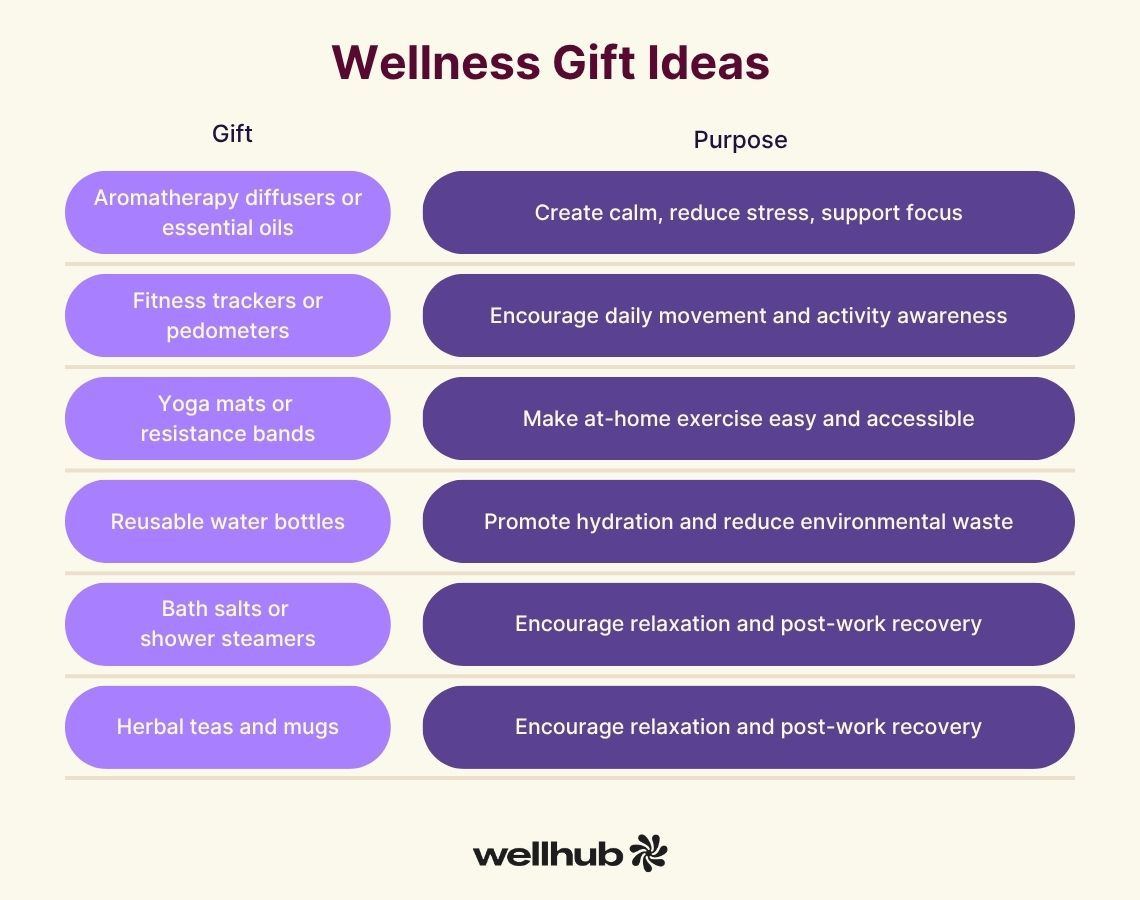
Look for options that can be personalized — a branded water bottle, a message in a gift box, or letting employees choose from a selection of wellness categories can help create a more meaningful experience.
Step 2: Consider a Gifting Theme or Bundle
If you're giving gifts in honor of Global Wellness Day, consider tying your items to a specific theme, like:
- Rest and recovery: Bath salts, calming teas, eye masks
- Movement and motivation: Resistance bands, workout towels, fitness apps
- Mindful moments: Journals, gratitude prompts, essential oils
Bundles can also be paired with wellness activities. For example, follow up a meditation workshop with a mini care kit of tea and a sleep mask. Or send yoga mats home after an onsite fitness class.
Step 3: Make It Inclusive for All Employees
Don’t forget remote and hybrid teams. A great gift loses its impact if it's difficult to access. Ship items directly to employees’ homes or provide digital wellness stipends so they can choose items that suit their preferences.
You can also offer:
- Digital gift cards to wellness retailers
- Subscription credits for meditation or fitness apps
- Personalized coaching or nutrition consult vouchers
When employees feel considered and included, the gift carries even more weight.
Step 4: Tie the Gesture Back to Your Culture
Wellness gifts aren’t just perks — they’re reflections of your values. Include a note or short message that explains why you're giving the gift. Let your employees know this isn't about checking a box. It's about investing in the people who make your organization thrive.
For example: “We hope this wellness gift gives you a moment to pause, recharge, and care for yourself the way you care for your work and our team.”
That framing helps connect the gift to your broader culture of wellbeing.
- Schedule Volunteering Activities
Volunteer opportunities offer a way to build meaningful connections — to each other, to the company, and to the community. Giving back can create a deep sense of purpose, reduce stress, and even boost mental and emotional wellbeing. So no wonderfour out of five employees say participating in charitable activities is important to their wellbeing!
Letting employees volunteer during work hours can also boost your brand—especially since 35% say their company rarely or never gives time for it.
Here’s how to bring that sense of purpose into your workplace in ways that are intentional, inclusive, and energizing.
Step 1: Choose Opportunities That Align With Your Team’s Values
Start by identifying causes that resonate with your workforce. You can send out a short interest survey asking:
- What causes are important to you?
- Have you volunteered before? If so, where?
- What kind of activities would you be most likely to join (hands-on, virtual, advocacy-focused, etc.)?
This not only increases participation, but also helps employees feel seen — their values are shaping the initiative.
Then, match those interests with local nonprofit partners or community groups. For example:
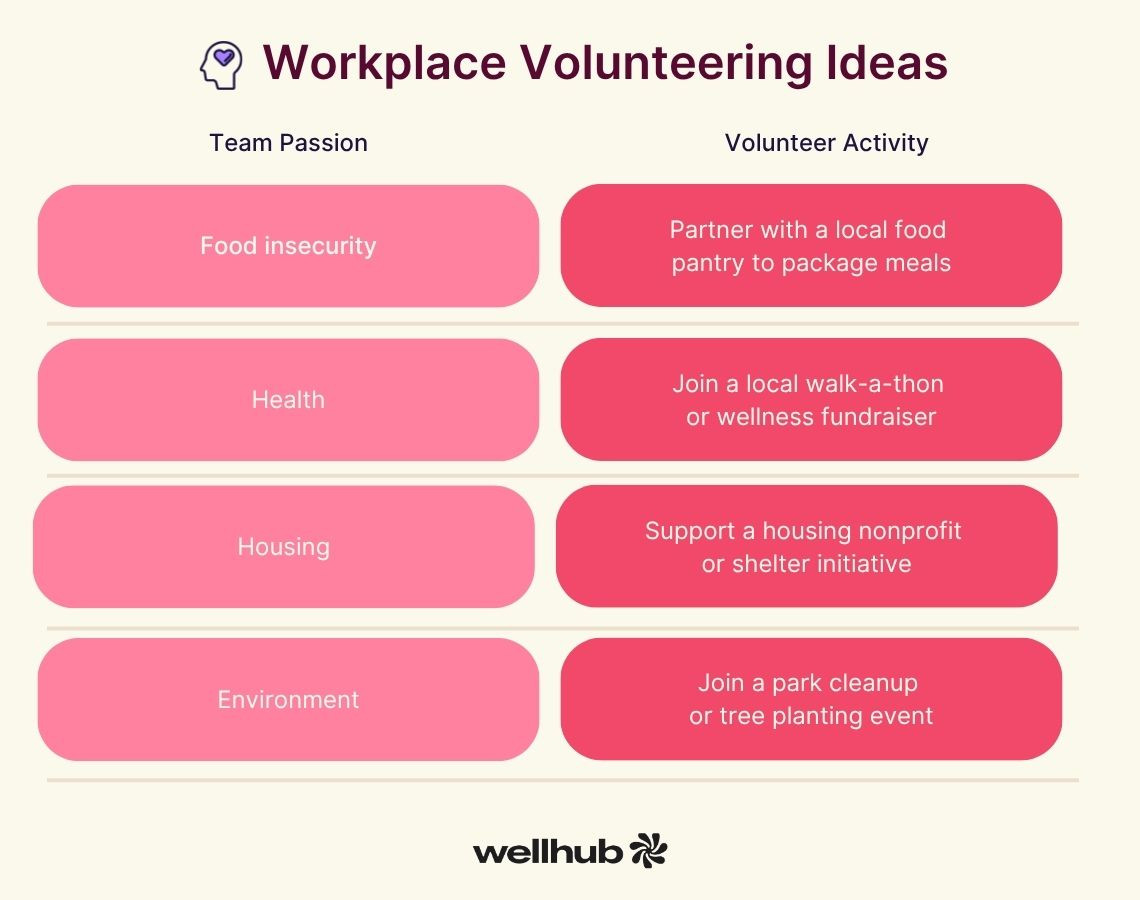
Step 2: Make Time to Give Back During the Workday
Time is one of the biggest barriers to volunteering. You can remove that obstacle by building service into the schedule. Consider offering:
- A half-day of paid volunteer time off (VTO)
- A designated "volunteer Friday" during Global Wellness Week
- A full-day company service project for in-person teams
For remote teams, you can also identify virtual volunteer opportunities, such as letter-writing campaigns, virtual tutoring, or skills-based volunteering through platforms like Catchafire.
Make participation easy and visible — a shared signup sheet, calendar invitations, and even designated team captains can help keep everything on track.
Step 3: Make it a Shared Experience
Volunteering is more than an act of service — it’s a bonding moment. Build connection by organizing group experiences and encouraging team participation. Employees can carpool, wear company t-shirts, or share photos of their experience on your internal communication channels.
After the event, keep the momentum going by:
- Hosting a reflection lunch or team debrief
- Sharing photos and stories in a company newsletter
- Celebrating total hours volunteered or the community impact achieved
Recognition reinforces that the company values this kind of engagement — and encourages repeat participation.
- Support Financial Wellness
Finances play a major role in overall wellbeing — and employees are feeling the pressure. According to the Wellhub’s State of Work-Life Wellness 2025 report, 68% of employees say their financial situation prevents them from investing in their overall wellbeing. That’s more than a statistic — it’s a call to action.
When organizations offer tools that help employees manage their money, it doesn’t just reduce stress. It can also improve focus, increase retention, and build long-term trust.
Here’s how to build a financial wellness program that meets your employees where they are, and helps them get to where they want to be.
Step 1: Start With the Basics — And Build From There
Not every employee has the same level of financial literacy. Some are planning for retirement. Others are trying to build credit, reduce debt, or manage monthly expenses. That’s why your program should cover a range of topics and offer tiered support.
Start with core resources like:
- Budgeting tools or workshops
- Debt management education
- Emergency savings guidance
- Credit score monitoring and education
Then layer on more advanced support, such as:
- Retirement planning seminars
- One-on-one financial coaching
- Investment or estate planning tools
Offering both digital and human support allows employees to choose the path that works for their learning style and financial goals.
Step 2: Provide On-Demand and Live Options
To ensure accessibility and engagement, offer a blend of live webinars, self-paced courses, and confidential consultations. Think of it like this:
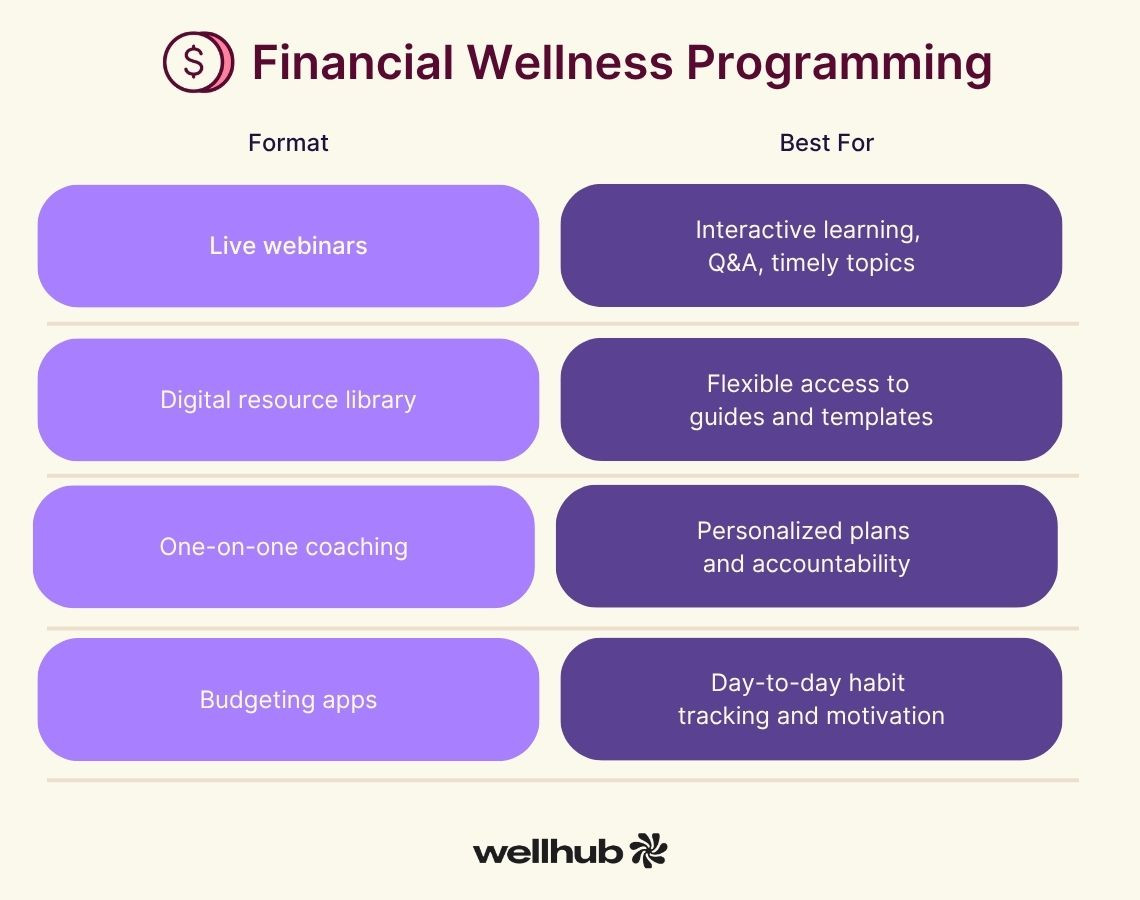
Offer sessions during multiple time slots, and make sure recordings are available for anyone who can’t attend live.
Step 3: Make It Easy to Access and Understand
Even the best financial programs fall flat if employees don’t know they exist — or don’t understand what they include. Promote your offerings with clear, jargon-free communication, such as:
- A dedicated page on your intranet with financial wellness tools
- Monthly spotlight emails highlighting new topics (e.g., “Debt-Free December” or “Smart Spending Summer”)
- Stories or testimonials from employees who’ve benefited from the program
Clarity builds confidence. And when employees understand what’s available, they’re far more likely to participate.
Step 4: Align the Program With Broader Wellbeing Benefits
Financial stress doesn’t live in isolation. It shows up in sleep patterns, eating habits, and mental health. Employees who view wellness as unaffordable are more likely to say they are less fit, eat less nutritiously, and experience poorer mental wellbeing.
When your financial wellness program connects with other initiatives — like nutrition, mental health support, and fitness access — it builds a stronger safety net.
Examples of integrated support include:
- Pairing financial coaching with therapy stipends
- Offering discounts or stipends for healthy food subscriptions
- Including money mindfulness content in meditation or wellness apps
This holistic approach reinforces the message that wellbeing is multi-dimensional — and your company is here to support all of it.
- Host a Book Club
Sometimes, wellbeing looks like breaking a sweat. Other times, it’s about getting lost in a great story, sharing ideas, and connecting over something that has nothing to do with work.
That’s the magic of a workplace book club.
Hosting a book club may not seem like a traditional wellness initiative — but it taps directly into two powerful dimensions of wellbeing: community and intellectual growth. Reading as a group fosters connection, encourages reflection, and gives employees a shared experience that can stretch minds and strengthen relationships.
Here’s how to make it work in a way that’s inclusive, low-pressure, and genuinely enriching.
Step 1: Define the Purpose and Format
First, decide what you want the book club to focus on. Will it be personal development? Fiction for fun? Books related to wellbeing or leadership? Let your goals guide the tone.
Then choose a format that fits your workforce:
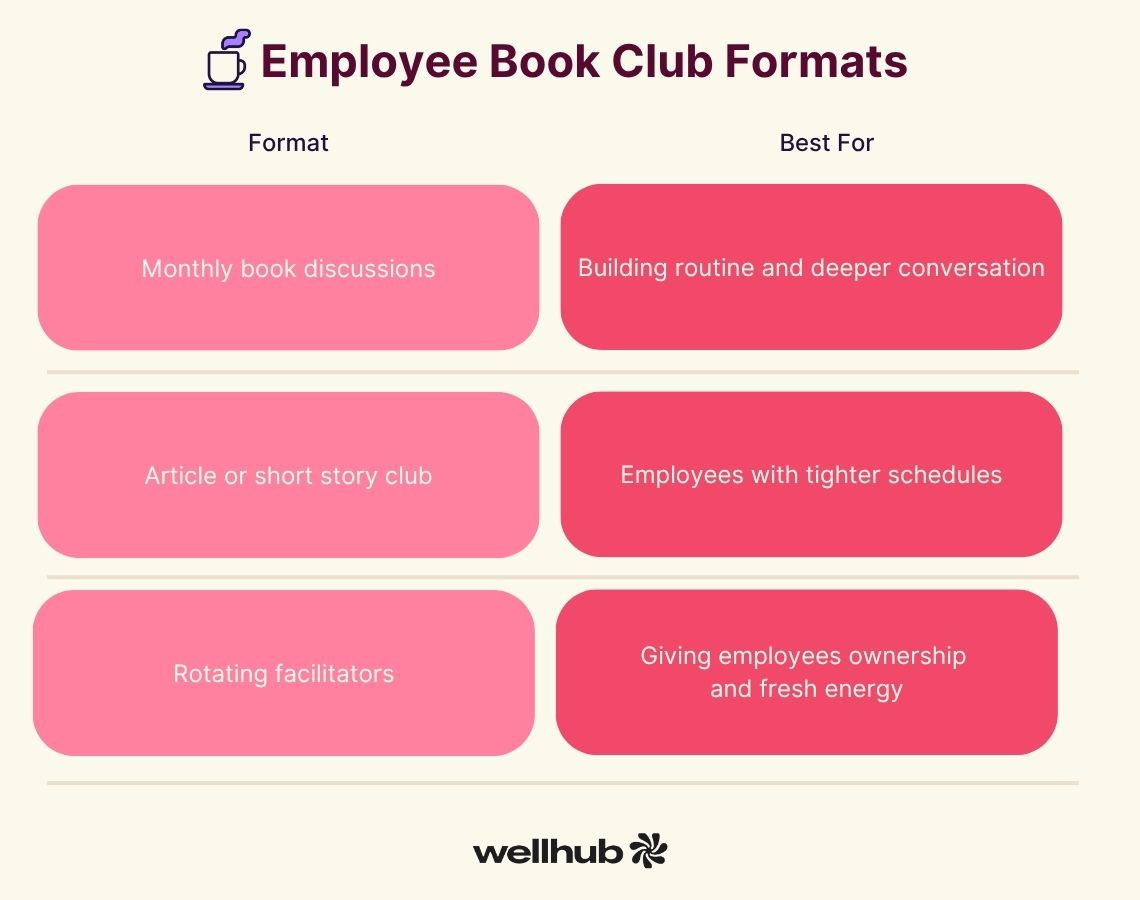
You can host sessions over lunch, during a designated wellness hour, or even after work for those who want to unwind and connect. Keep it opt-in; this should feel like a gift, not a mandate.
Step 2: Involve Employees in the Book Selection
A book club only works if people want to read what’s on the list. Consider setting up a survey or open suggestion form to gather input on genres, authors, and themes. You could also vote on each upcoming title to ensure employees feel invested.
If your goal is to tie the club to broader wellbeing goals, you might focus on books that explore:
- Emotional resilience
- Work-life wellness
- Mindfulness or mindset
- Creativity, curiosity, or innovation
- Social justice or cultural exploration
Offering options — like one nonfiction and one fiction pick per month — allows more people to engage in a way that suits their interests.
Step 3: Create a Welcoming Space for Conversation
You don’t need a library or lounge to make this work. A quiet conference room, a virtual Zoom link, or a break area with a few chairs will do just fine. What matters is the tone.
Here’s how to encourage honest, inclusive discussion:
- Send a few open-ended discussion questions before each meeting
- Assign a rotating host or facilitator to keep conversation moving
- Make it okay to show up even if you didn’t finish the book
Focus less on literary analysis, and more on what resonated, surprised, or challenged people. Some of the best moments come when someone says, “I never thought of it that way.”
Step 4: Highlight the Link Between Reading and Wellness
Reading supports cognitive function, emotional processing, and focus — all things that contribute to overall wellbeing. In fact, studies have linked regular reading to lower stress, better sleep, and increased empathy.
It also builds community. This is critical for wellness: 98% of full-time employees say their belonging at work is important to their overall wellbeing. Book clubs offer a meaningful, low-stakes way to create connections across departments and locations.
You can make the impact more tangible by:
- Encouraging employees to journal about their reflections
- Creating a digital space (like a Slack channel) for book-related chats
- Inviting guest speakers or authors to join discussions
Spark Real Change With Daily Wellness
Busy schedules and rising stress can wear employees down. But simple steps—like mindful meals, group fitness, and guided meditation—can recharge your team.
An employee wellbeing program makes it easier to build those habits into the day. It gives employees access to fitness classes, meditation apps, nutrition workshops, and more. The results speak for themselves: companies with Wellhub can reduce turnover by up to 40% and save up to 35% on healthcare costs.
Speak with a Wellhub Wellbeing Specialist to help your employees feel better, move more, and show up as their best selves every day!

Company healthcare costs drop by up to 35% with Wellhub*
See how we can help you reduce your healthcare spending.
References
- Alston, A. (2025, May 12). How Office Lunch Impacts Health, Culture & Performance. Crafty. https://info.craftydelivers.com/office-lunch-impact
- Black, D. S., O’Reilly, G. A., Olmstead, R., Breen, E. C., & Irwin, M. R. (2015). Mindfulness meditation and improvement in sleep quality and daytime impairment among older adults with sleep disturbances. JAMA Internal Medicine, 175(4), 494. https://doi.org/10.1001/jamainternmed.2014.8081
- Goyal, M., Singh, S., Sibinga, E. M. S., Gould, N. F., Rowland-Seymour, A., Sharma, R., Berger, Z., Sleicher, D., Maron, D. D., Shihab, H. M., Ranasinghe, P. D., Linn, S., Saha, S., Bass, E. B., & Haythornthwaite, J. A. (2014). Meditation programs for psychological stress and well-being. JAMA Internal Medicine, 174(3), 357. https://doi.org/10.1001/jamainternmed.2013.13018
- Jason. (2025, January 29). Mindful Eating Transforms Your Relationship with Food (Science-Backed Benefits). Health & Wellness Canada. https://www.healthcouncilcanada.ca/mindful-eating-transforms-your-relationship-with-food-science-backed-benefits/
- Keng, S., Smoski, M. J., & Robins, C. J. (2011). Effects of mindfulness on psychological health: A review of empirical studies. Clinical Psychology Review, 31(6), 1041–1056. https://doi.org/10.1016/j.cpr.2011.04.006
- Pascoe, M. C., Thompson, D. R., Jenkins, Z. M., & Ski, C. F. (2017). Mindfulness mediates the physiological markers of stress: Systematic review and meta-analysis. Journal of Psychiatric Research, 95, 156–178. https://doi.org/10.1016/j.jpsychires.2017.08.004
- Powell, J. (2025, May 1). Mindful eating - the nutrition source. The Nutrition Source. https://nutritionsource.hsph.harvard.edu/mindful-eating/
- Utah State University. (2023, December 14). Mindful Eating: Benefits, challenges, and strategies. USU. https://extension.usu.edu/nutrition/research/mindful-eating
- Wellhub (2024, October 16). The State of Work-Life Wellness 2025. https://wellhub.com/en-us/resources/research/work-life-wellness-report-2025/
- Wellhub. (2023, October 18). The State of Work-Life Wellness 2024. https://wellhub.com/en-us/resources/research/work-life-wellness-report-2024/
- Wellhub (2024, October 16). The State of Work-Life Wellness 2025. https://wellhub.com/en-us/resources/research/work-life-wellness-report-2025/
Category
Share

The Wellhub Editorial Team empowers HR leaders to support worker wellbeing. Our original research, trend analyses, and helpful how-tos provide the tools they need to improve workforce wellness in today's fast-shifting professional landscape.
Subscribe
Our weekly newsletter is your source of education and inspiration to help you create a corporate wellness program that actually matters.
Subscribe
Our weekly newsletter is your source of education and inspiration to help you create a corporate wellness program that actually matters.
You May Also Like

Corporate Wellness Trends HR Must Know for 2026 | Wellhub
See the top 2026 wellness trends shaping performance, retention, and culture—plus how HR can build a unified, ROI-driven wellbeing strategy.

Wellness Points Programs: Boost Employee Health & Engagement | Wellhub
Turn your workplace wellness strategy around with a points program that rewards healthy behavior with perks, from extra time off to gift cards.

Employee Financial Wellness Programs: Ultimate HR Guide | Wellhub
Create an effective financial wellness program that supports your employees in their financial needs, boosting productivity and retention.